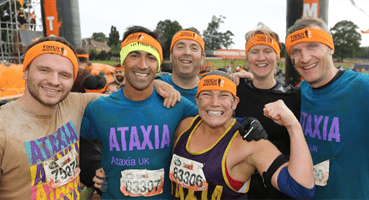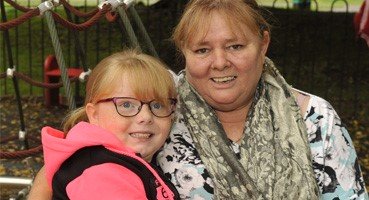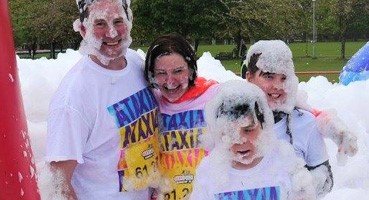The PROSPAX (PROgression chart of SPAstic ataXias) project focuses on ARSACS and SPG7, and is a collaboration between neurologists in several sites across Europe and Canada. The overall aim is to gain a better understanding of how spastic ataxias progress over time to prepare well-designed treatment trials for these conditions, that will be applicable to many of the >100 other spastic ataxias.
1. Tell me a bit about yourself and how you became involved in the PROSPAX project
I completed a master’s degree in technical medicine, specialising in medical sensing and stimulation. During my education I learned how to convert the state of the human body into signals and how to implement new technology in healthcare. I have been working for three years at the center for rare and genetic movement disorders that is part of the Neurology department of the Radboud University Medical Center in Nijmegen, the Netherlands. My focus is the PROSPAX project, so I set up the visits related to this project and collect all the data. This includes neurological tests, MRIs, collecting blood samples and sensor data and instructing participants how to use our new developed research app (the SPAX app) at home. From the introduction of the PROSPAX consortium, I have been in close contact with a mobile health company in Italy called mHealth Technologies in developing the SPAX app. The app is a collaboration between partners of the PROSPAX consortium. We started with lab-based research, then a pilot study, and now we are collecting data over a period of eight weeks, from sites in the Netherlands, Germany, and Italy.

2. Could you give an overview of the PROSPAX project, and where the idea of the SPAX app fits into that?
The aim of the project is to find digital biomarkers that can tell us how two rare forms of ataxia, Spastic Paraplegia Type-7 (SPG7) and Autosomal Recessive Spastic Ataxia of Charlevoix-Saguenay (ARSACS) progress over time in the population. These can be all kinds of biomarkers, such as from MRI brain scans or blood samples. We have a natural history study, where we have been following people with ARSACS and SPG7 over two years during three visits. As there are currently no treatments for spastic ataxias, finding biomarkers that are sensitive to change is key, as these markers could be used in future clinical trials of potential drugs to treat spastic ataxias. These are known as trial-readiness biomarkers.
3. Why did you decide to create an app?
The main benefit is that you can collect data at home, which is much more accessible for people to fit in with their lifestyles. As you can imagine, if it is just that one moment you see someone in an outpatient clinic, it is only a snapshot and may be an especially good or bad day. Hopefully, with the SPAX app we can create a more realistic image of how the spastic ataxias progress. Also, there can be a lot of travel to get to the clinics, which can be especially challenging when people have reduced mobility; a smartphone app can remove the travel barrier.
4. How does the app work?
At the moment, the app is only for research purposes, so we use our own smartphones for the study. Hopefully it will one day be publicly available, even for other types of ataxias. The app uses sensors in a smartphone to measure aspects like movement and speed of turning during a walking task. The app includes one question and five tasks, so participants will first answer the question relating to how they would rate the level of their symptoms, with zero being no complaints, and 10 being most severe. Of course, some days can vary, and someone may rate three one day and six another.
Then, there are five tasks to complete: one for walking, one for finger tapping, one for balance, one for hand movement and one for speech, which are the main areas of movement affected by spastic ataxias. For people who are not able to walk or stand, which made up almost a third of our participants during the pilot study, they will only complete the tasks relevant to them, such as hand movement, speech and finger tapping. We first do a training session in the clinic to show participants how to use the app, and have created instruction videos, so that people know how to use the app properly.
5. Do participants use the SPAX app on its own, or alongside other tools?

The study involves multiple tools (pictured on the right), including a pouch to store the smartphone so it is located on the lower back to help detect movement. We also have an elastic band we use for the hand movement task.
6. Is the app translated into different languages?
We have tested and translated the app into Dutch, Italian and German. We had to ensure the descriptions and tasks were translated to mean the same things in different languages. To do this, we have colleagues and researchers including native speakers who can translate, so there are multiple people translating. We have not yet tested the app in the UK, or made a UK translation, but hope to.
7. How many people have taken part, or are planned to take part, and how long do participants have to use the app or visit the clinic for?
The first lab-based study involved one clinic visit in Nijmegen and included 17 people with SPG7, six people with ARSACS, and 12 healthy participants. In the pilot study, we asked 11 people with SPG7, six people with ARSACS and five healthy participants to use the SPAX app along with a smartwatch at home for four weeks to see how often people performed the tasks, and how easy they were to complete from home. We asked them to perform the tasks twice a week, and then they would wear the smartwatch all the time to measure how many minutes they were at rest, how many minutes they were active, and how intense the activities were. Now we are working on an ongoing study where we plan to recruit 40 in total with SPG7 or ARSACS and 10 healthy participants to use the SPAX app and smartwatch at home for eight weeks. Recruitment for this longer study in Italy and Germany is ongoing.
8. What has been the biggest challenge so far in testing the app?
Keeping participants motivated to use the app has been a challenge, as they are not directly benefitting, but rather helping research. Whilst we had good compliance in the pilot study, with participants completing 80 percent of the required task days on average, we are asking people in the longitudinal study to use the app for eight weeks, which is much longer than the pilot study, so we hope they keep motivated during those 8 weeks. So, when we in the future think about marketing the app to the public, we will need to think about how to reward use of the app. In a study, you cannot really reward people for taking part because it can cause them to change their behaviours, such as moving more, which is not a real reflection of what their normal lives look like.
9. What kind of results have you seen so far, and what are you hoping to find?
We saw that there was a significant difference in walking pattern between people with SPAX and healthy participants, with cadence (number of steps per minute) significantly lower in those with SPAX and time taken to walk each step significantly longer. Those with SPAX also took significantly longer to turn their body in the walking task than healthy participants. The data collected in the home from the smartphone and watch were highly reliable when compared to the clinical rating scale for ataxia (SARA), used to measure the progression of ataxia symptoms in a clinical setting.
In the pilot study, we not only found that people were able to complete the tasks regularly, but also that they found the app easy to use. In total, we aim to have approximately 40 participants who have used the app by May 2024. For conditions as rare as SPG7 and ARSACS, 40 participants is a very good number, and we have lots of different time points too. Our long-term aim is to generate a disease severity score using all of our data across the tasks. This has been done in Parkinson’s, where a disease severity score of 0 means no Parkinson’s and 100 means the most severe Parkinson’s. This disease severity score will help in future clinical trials, as we could use it as an objective measure over time for monitoring of disease stage and disease progression in SPAX.
10. When do you expect to have completed the study?
We initially planned for the whole PROSPAX project, including the SPAX app, to take place over three years, finishing in 2023, but now we have extended it to the end of 2024. This is because creating an app, collecting and analysing data, and translating the content takes time. Most of our participants have busy lives, so it is heartening to see them commit to using the app and visiting the clinics, alongside their lives. We look forward to sharing more data with you in the future.
To read more about the PROSPAX project, click here. To read our recent article on the PROSPAX natural history study of ARSACS and SPG-7, click here.






